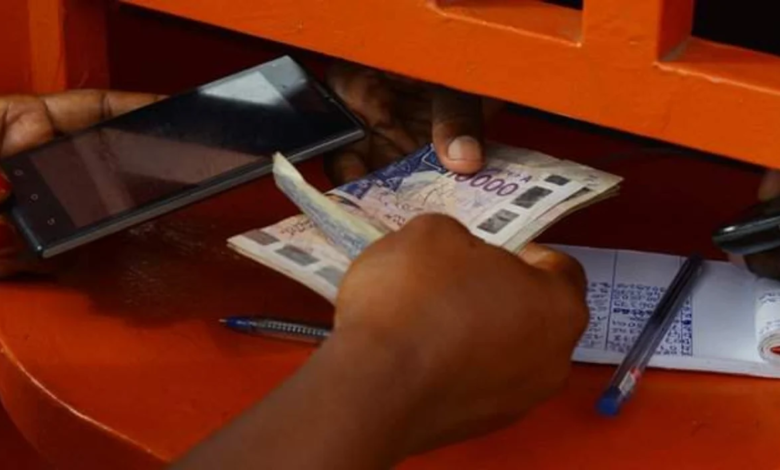Unlocking the potential of remittances : a key to Africa’s economic development
Remittances have become a crucial financial source for Africa, surpassing even Official Development Assistance (ODA) and Foreign Direct Investments (FDI). The African Development Bank’s Working Paper 386 examines how these financial flows can be better directed towards productive investments to support the continent’s growth and development.

Remittances have become one of the most important sources of financing for Africa, now surpassing Official Development Assistance (ODA) and Foreign Direct Investments (FDI). According to the African Development Bank, these transfers reached record levels in 2023, amounting to approximately $84 billion, far exceeding FDI flows, which amounted to around $50 billion, and ODA, which reached around $46 billion. These funds represent essential economic support for many African families, but they also hold significant potential to finance economic growth and sustainable development on the continent.
The African Development Bank’s Working Paper 386, titled « Unlocking Africa’s Potential: Making Remittances Work for Development, » explores the use of remittances and how they can be directed towards more productive uses. The report suggests that although remittances have an immediate impact on household consumption, their investment potential remains largely underutilized, thus limiting their ability to drive long-term economic growth.
Remittances: An underutilized opportunity?
One of the key findings of the report is that although remittances have an immediate impact on household consumption in Africa, their potential for investment remains relatively low. According to the report, « the use of remittances in Africa is too often directed towards immediate consumption rather than investments in productive sectors. » This trend, observed in many previous studies, limits their contribution to sustainable economic growth.
However, there are notable exceptions where some countries have managed to better use these funds to finance productive investments. Countries like Egypt, Senegal, and Nigeria have shown a greater tendency to invest a portion of their remittances in strategic sectors. « A small subset of countries shows stronger investment responses to remittances, suggesting that it is possible to redirect these flows to higher value-added sectors, » the report states.
The determinants of better use of remittances
To understand why some countries succeed in better using remittances, the authors of the report employed the Oaxaca-Blinder decomposition method, which helps analyze differences in the use of funds across countries. Several factors were identified as crucial in directing remittances towards productive investments.
Starting with financial inclusion. Countries with strong and accessible banking systems have demonstrated a stronger ability to channel funds into long-term investments. « Strengthening financial inclusion is crucial for enabling families to manage their remittances strategically and invest in income-generating projects, » the researchers state.
Next, macroeconomic stability. Countries with greater economic and political stability have been more successful in redirecting remittances towards productive investments. Market regulation, control of inflation, and fiscal policies supporting investment play a crucial role in this process.
Finally, the investment climate. Countries offering a favorable investment climate, with incentives for both foreign and local investors, are better able to make use of these funds. « A stable business environment, with policies supporting entrepreneurship, is essential for transforming remittances into development levers, » the report emphasizes.
Policies to unlock the potential of remittances
The report proposes several recommendations to maximize the impact of remittances on Africa’s economic development. Among these, promoting financial inclusion stands out, with the implementation of financial literacy programs for citizens, the creation of diaspora bonds to encourage investments in home countries, and the strengthening of financial infrastructure.
Additionally, the development of community projects and collaboration between the diaspora and local governments are considered essential. « Engaging the diaspora is crucial for creating partnerships with local communities and investing in long-term development projects, » the report specifies. Crowdfunding programs, as well as encouraging entrepreneurship, are also among the effective levers to transform these financial flows.
Finally, international financial institutions and multilateral development banks, such as the World Bank and the African Development Bank, play a key role in this process. They can support African countries by providing financial assistance and technical expertise to improve remittance management and channel them into high-impact investments.
« Development banks, including the African Development Bank and the World Bank, must support initiatives to strengthen remittance management and direct them towards structuring investments, » concludes the report.
Towards transforming remittances into development levers
In conclusion, the African Development Bank’s Working Paper 386 highlights the considerable potential of remittances to become a driver of economic development in Africa. However, to fully exploit this potential, ambitious public policies must be put in place to promote a productive management of these financial flows. The report stresses that remittances can play a key role in the continent’s sustainable growth, provided strategic actions are taken to redirect them towards investment rather than mere consumption. With strong policies and effective implementation, remittances can become an essential pillar of Africa’s development.
Read the report : Working Paper 386






